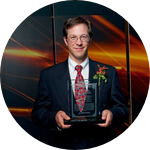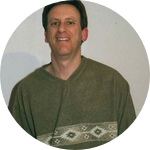About This Project
40 US states are presently experiencing or soon expecting water shortages. The US Oil & Gas industry dumps 350 billion gallons of wastewater onto our planet every year due to high water treatment costs. That is equivalent to 530,000 Olympic-sized swimming pools.
In response, we are developing a low-cost, efficient, and environmentally friendly water treatment solution. If successful, this technology, "PhotoCide," could reduce industrial environmental impact, while saving water, energy, and money.
Ask the Scientists
Join The DiscussionWhat is the context of this research?
40 US states are presently experiencing or soon expecting water shortages. Due to increasing global population, increasing demand for water, and global warming, we must develop innovations to reduce the cost of water treatment.
Water is generated by three primary means:
- Treating + reusing wastewater
- Treating sea, brackish, storm, and ground waters
- Water conservation
The US Oil & Gas Industry dumps 350 billion gallons of wastewater onto our planet each year. That is equivalent to 530,000 Olympic-sized swimming pools full of wastewater.
If we can reduce the cost of water treatment, industries and municipalities alike will be financially incentivized to treat and recycle all wastewater for beneficial reuse including irrigation, cooling towers, and municipal uses.What is the significance of this project?
We plan to use visible spectrum LED photodisinfection to reduce the cost of water treatment.
Many current biomedical field experts regard PhotoDynamic Disinfection (PDD) as the most powerful disinfection technology (Street). PDD works by using light in the visible spectrum to photoactivate a photosensitizer (a nontoxic dye such as Methylene Blue). This releases oxygen radicals which non-specifically eradicate bacteria, viruses, protozoa, and fungi via irreversible cell wall destruction, and also break down organics and acids.
We have adapted PDD to purify water. We've named this proprietary water treatment technology PhotoCide (which means "light kill"). Preliminary studies suggest PhotoCide may cut water treatment costs by up to 20% via energy efficiency and maintenance savings.
What are the goals of the project?
First, we will ascertain optimal light and photosensitizer dosages, derived from our 96-well plate bioassay lab tests.
Second, we will test PhotoCide's efficacy in removing both organics and acids present in oilfield wastewater. This will expand upon our original microbe-focused studies.
Third, we will build and test a working bench-top prototype, with target efficiency and efficacy values equal to or greater than alternative water disinfection solutions.
Our second and third goals are contingent upon achieving our “target” funding goal of $15,000.
Beyond wastewater treatment for the Oil and Gas Industry, future applications include municipal wastewater, drinking water, and mining.
Budget
Your support fills our funding gap, enabling us to complete lab tests to validate and optimize PhotoCide's efficacy and efficiency, and build and validate a bench-top prototype.
$5,050 (first goal) enables us to:
1) Conduct 96-well bioassay lab tests to ascertain highest-efficiency light and photosensitizer dosages, AND
2) Validate that PhotoCide addresses organics present in wastewater.
$15,000 (target goal) enables us to:
1) Conduct 96-well bioassay lab tests to ascertain optimal light and photosensitizer dosages,
2) Prove that PhotoCide addresses BOTH organics and acids present in wastewater, AND
3) Build and test a bench-top prototype.
To date, we have raised $60,000 through WA statewide Business Plan Competition (1st Place), Environmental Innovation Challenge (2nd Place), and Jones Foster Accelerator. These wins have supported our R&D progress to date.
Several team members, including Senior PhD scientists, are committing their time to this work without cash compensation.
Endorsed by
Meet the Team
Team Bio
Partial List
Ian Wylie – 30 years in experimental design, water chemistry, spectroscopy, and energy technology. Former Chemical Research Scientist at Advanced Diamond Technologies. 28 patent filings.
John Miller – 25 years in cell death. Founder/former CEO & CSO of Charter Pacific Technologies LLP; managed research team re: compounds w/ anti-microbial/anti-inflammatory activities.
Eric Berlin – 20 years developing integrated electrical-mechanical products at Hewlett Packard, Microsoft, & AT&T.
Ryan Vogel
Upon researching and then fully understanding the pressing gravity of our national and global water stresses, Ryan committed to finding and developing innovations to reduce the cost of water treatment, and founded Pure Blue in March 2013. Today, Ryan leads the team, forges research and business partnerships, fundraises, and coordinates development + implementation of budgets and strategies.
His previous roles include Project Sponsor of UW Global Integrated Systems Engineering and VP Business Development at Assets America (commercial financing).
Ryan has been featured in High Country News’ “10 Leaders under 30 Changing the West” and nominated alongside his co-founder by Geekwire for "Young Entrepreneur of the Year."
Additional Information
Pure Blue Tech's humble beginnings began at the University of Washington. The small company is alao developing a high-efficiency membrane filtration product which works synergistically wirh PhotoCide. Both technologies have received interest from customers and industry partnerships have been developed to support research, development, and introduction into the market.
GeekWire (article)
http://www.geekwire.com/2013/meet-clean-water-startup-won-1st-place-uw-biz-plan-competition/
WA Business Plan Competition Grand Prize (Article)
http://depts.washington.edu/foster/68220-awarded-t...
Jones Foster Accelerator (Article)
Project Backers
- 14Backers
- 16%Funded
- $772Total Donations
- $55.14Average Donation




